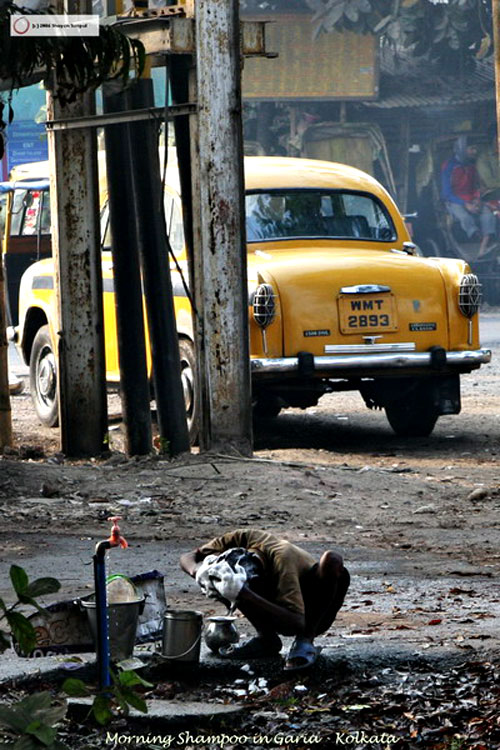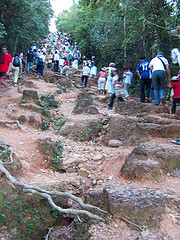
- •What are the different types of tourism?
- •Dark Tourism: a Fine Line Between Curiousity and Exploitation by Amanda Kendle
- •So What Exactly is Dark Tourism?
- •What Kinds of Dark Tourism Are There?
- •Grief Tourism
- •Disaster Tourism
- •Poverty Tourism
- •Suicide Tourism
- •Doomsday Tourism
- •Dark tourism is nothing new...
- •Should you stay away from dark tourism?
Disaster Tourism
Some might say disaster tourism is a subset of grief tourism, but it deserves its own category after getting so much attention of late. An onslaught of visitors following some kind of natural disaster, such as those visiting south-east Asia following the 2004 tsunami crisis, or people traveling to New Orleans to see the aftermath of Hurricane Katrina, are both examples of disaster tourism.
It’s a shade more controversial than grief tourism. You could argue that those who visit disaster zones – especially when little time has elapsed since the disaster – may hinder the efforts being made to restore communities to a normal way of life. On the other hand, promoting this kind of travel might bring in much-needed income at a difficult time.
 Morning
Shampoo in Kolkata, India © Shayan
(USA)
Morning
Shampoo in Kolkata, India © Shayan
(USA)
Poverty Tourism
It’s a natural human trait to be interested in how the other half live. That’s why we line up in droves to trundle through exquisite royal palaces or mansions belonging to the rich. But some are more interested in how the other, other half live: the very poor.
Poverty tourism usually features tours to slum areas and poverty stricken towns. Some claim to help these poor by using profits from the tours to improve their lot, but this seems counter-productive – if they broke the poverty cycle here their tour business would close down. As you can see, I’m a bit cynical about the idea of poverty tourism. Touring a squatter camp in Soweto, South Africa, or similarly poor settlements in India, and driving through the favelas of Rio de Janeiro all belong to this category.
Suicide Tourism
This particularly dark side of dark tourism generally takes two forms. The first involves people traveling to a particular destination with the intention of committing suicide, often by jumping from a famous landmark. Statistics prove that a significant proportion of suicide cases at well-known tourist attractions are tourists, although it’s not clear whether their trip was planned around this.
A second form of suicide tourism takes into account the various laws related to euthanasia in different countries. For example, in several European countries like Belgium, the Netherlands and Switzerland, active euthanasia is not illegal, and terminally-ill people sometimes travel there to end their life legally.
Doomsday Tourism
The end of the world is coming, some people believe. Or at the very least, the end of certain tourist attractions is coming. Doomsday tourism refers to the thinking that you should hurry up and visit particular places which are under threat, usually as a result of environmental problems and globing warming.
For example, there’s been a rush on visits to see Arctic glaciers because many travelers (nudged by their travel agents) are scared they’re going to disappear. Some visitors to the Great Barrier Reef, Mount Kilimanjaro and the Galapagos Islands follow the same line of thinking. Of course, it’s not entirely logical, because the act of traveling to these places is in turn creating environmental pressures – but perhaps these travelers won’t mind, a touch selfishly, because they’ll have seen what they wanted.
Dark Tourism: Where Tragedy Becomes a Tourist Draw
Dark tourism, also known as grief tourism, is a relatively new term that's still not well defined.
Mostly, it involves visiting sites and places related in some way to violent death or suffering - places that might qualify asmacabre. Grief tourism is a similar term and they're sometimes used interchangeably, but I find them hard to differentiate.
An even more graphic word for this type of travel is thanatourism, from the Greek word thanatos, the Ancient Greek personification of death.
To add to the confusion, this is different from disaster tourism, which deals mostly with regions that have suffered from natural disasters rather than man-made ones. But they have plenty in common.
There are plenty of examples of dark tourism, or grief tourism. Here are a few of the most famous, or notorious:
Ground Zero, site of the former World Trade Center twin buildings
Nazi death camps, where six million people died
Crash sites, such as Lockerbie in Scotland, where a TWA jumbo jet was blown up in 1988
the Paris tunnel in which Princess Diana was killed in 1997 being chased by paparazzi
 Cambodia's
killing fields
Ian
Armstrong
Cambodia's
killing fields
Ian
Armstrong
Cambodia's killing fields (Choeng Ek Extermination Camp), mass graves for some 20,000 Cambodians murdered during the Khmer Rouge genocide of the late 1970s
Central Park's Strawberry Fields memorial to John Lennon, who was assassinated nearby outside the Dakota in 1980
Most cemetaries, including Arlington in the US and the Père Lachaise in Paris
Soham, a small English town, where two 10-year-olds were kidnapped and murdered by their school caretaker
Hiroshima in Japan, where the first atomic bomb was dropped
Chernobyl, where tour guides use geiger counters to test radiation while escorting visitors
the Anne Frank museum in Amsterdam, in memory of a 13-year-old Jewish schoolgirl who kept a diary while hiding from the Nazis
Hitler's mountain residence at Berchtesgaden, in the Bavarian Alps
 Hitler's
bunker, Berchtesgaden
wong zitao via Flickr CC
Hitler's
bunker, Berchtesgaden
wong zitao via Flickr CC
